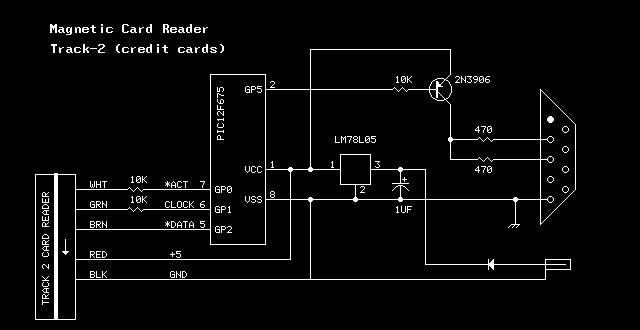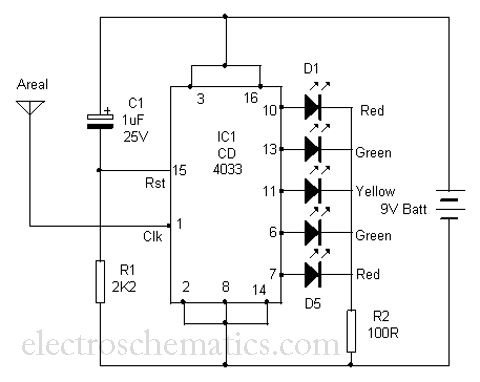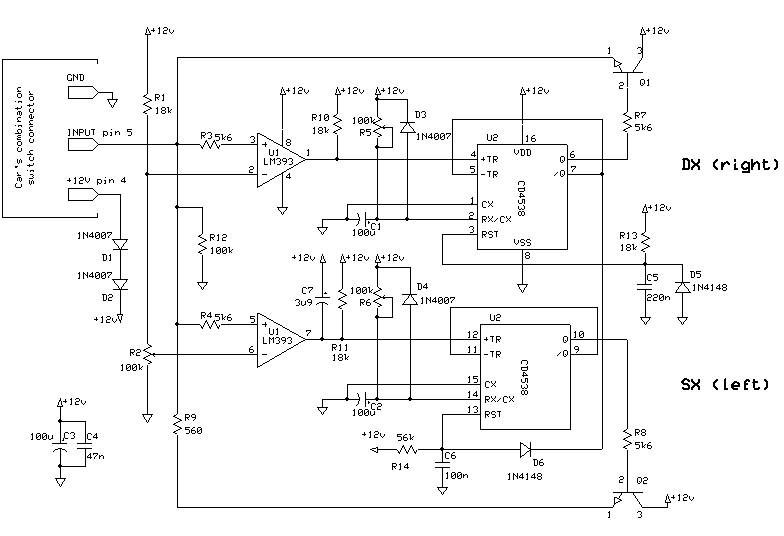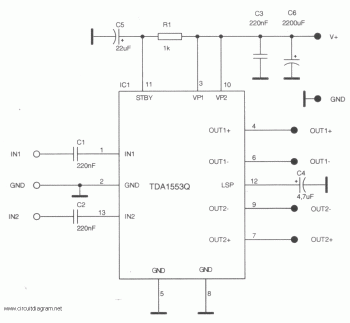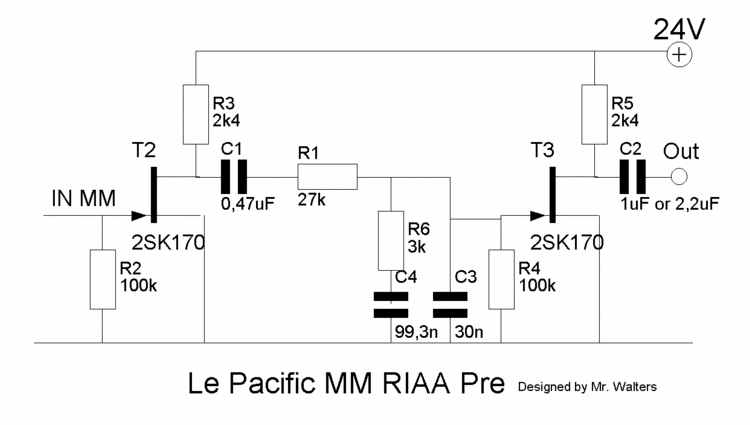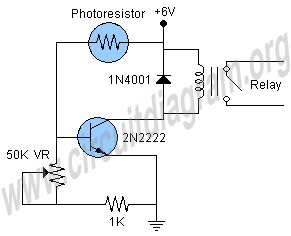
car parking aid sensor
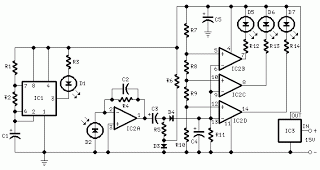
This sensor circuit was designed to assist in parking a car near a garage wall while reversing. LED D7 lights up when the distance from the bumper to the wall is approximately 20 cm. LEDs D7 and D6 illuminate at around 10 cm, and all three LEDs (D7, D6, and D5) activate at about 6 cm. This provides an alert when the vehicle approaches too close to the wall. The distances mentioned can vary in operation, depending on the infrared transmitting and receiving LEDs used, and are significantly influenced by the color of the reflecting surface. Dark surfaces can greatly reduce the device's sensitivity. Additionally, this circuit can be utilized for other applications such as liquid level detection and proximity sensing.
The sensor circuit operates based on the principles of infrared (IR) reflection. It typically consists of an IR LED as the transmitter and a photodiode or phototransistor as the receiver. When the vehicle backs up, the IR LED emits infrared light, which reflects off nearby surfaces, such as the garage wall. The reflected IR light is then detected by the photodiode or phototransistor.
The circuit is designed with a comparator or a microcontroller that interprets the received signals. Based on the intensity of the reflected light, the circuit can determine the distance to the wall. As the vehicle approaches the wall, the intensity of the reflected IR light increases, triggering the appropriate LEDs to light up, providing visual feedback to the driver. The use of multiple LEDs allows for a graduated alert system, where the driver receives increasingly urgent warnings as they get closer to the wall.
The performance of the sensor circuit can be affected by various factors, including the color and texture of the wall. For instance, dark or matte surfaces absorb more infrared light, leading to reduced sensitivity and potentially inaccurate distance measurements. Conversely, smooth and light-colored surfaces reflect IR light more effectively, enhancing the sensor's performance.
In addition to parking assistance, the versatility of this circuit allows it to be adapted for other applications. For example, it can be employed in liquid level detection systems, where the sensor can detect the height of a liquid by measuring the distance to the liquid surface. Similarly, it can serve in proximity sensing applications, where it can detect the presence of objects within a certain range.
Overall, this sensor circuit is a valuable tool for enhancing safety and convenience in parking scenarios and can be adapted for various other applications in the field of electronics.This Sensor circuit was designed as an aid in parking the car near the garage wall when backing up. LED D7 illuminates when bumper-wall distance is about 20 cm. , D7+D6 illuminate at about 10 cm. and D7+D6+D5 at about 6 cm. In this manner you are alerted when approaching too close to the wall. All distances of the sensor mentioned before can vary i n this operation, depending on infra-red transmitting and receiving LEDs used and are mostly affected by the color of the reflecting surface. Black surfaces lower greatly the device sensitivity. Obviously, you can use this circuit in other applications like liquids level detection, proximity devices etc.
🔗 External reference
The sensor circuit operates based on the principles of infrared (IR) reflection. It typically consists of an IR LED as the transmitter and a photodiode or phototransistor as the receiver. When the vehicle backs up, the IR LED emits infrared light, which reflects off nearby surfaces, such as the garage wall. The reflected IR light is then detected by the photodiode or phototransistor.
The circuit is designed with a comparator or a microcontroller that interprets the received signals. Based on the intensity of the reflected light, the circuit can determine the distance to the wall. As the vehicle approaches the wall, the intensity of the reflected IR light increases, triggering the appropriate LEDs to light up, providing visual feedback to the driver. The use of multiple LEDs allows for a graduated alert system, where the driver receives increasingly urgent warnings as they get closer to the wall.
The performance of the sensor circuit can be affected by various factors, including the color and texture of the wall. For instance, dark or matte surfaces absorb more infrared light, leading to reduced sensitivity and potentially inaccurate distance measurements. Conversely, smooth and light-colored surfaces reflect IR light more effectively, enhancing the sensor's performance.
In addition to parking assistance, the versatility of this circuit allows it to be adapted for other applications. For example, it can be employed in liquid level detection systems, where the sensor can detect the height of a liquid by measuring the distance to the liquid surface. Similarly, it can serve in proximity sensing applications, where it can detect the presence of objects within a certain range.
Overall, this sensor circuit is a valuable tool for enhancing safety and convenience in parking scenarios and can be adapted for various other applications in the field of electronics.This Sensor circuit was designed as an aid in parking the car near the garage wall when backing up. LED D7 illuminates when bumper-wall distance is about 20 cm. , D7+D6 illuminate at about 10 cm. and D7+D6+D5 at about 6 cm. In this manner you are alerted when approaching too close to the wall. All distances of the sensor mentioned before can vary i n this operation, depending on infra-red transmitting and receiving LEDs used and are mostly affected by the color of the reflecting surface. Black surfaces lower greatly the device sensitivity. Obviously, you can use this circuit in other applications like liquids level detection, proximity devices etc.
🔗 External reference
Warning: include(partials/cookie-banner.php): Failed to open stream: Permission denied in /var/www/html/nextgr/view-circuit.php on line 713
Warning: include(): Failed opening 'partials/cookie-banner.php' for inclusion (include_path='.:/usr/share/php') in /var/www/html/nextgr/view-circuit.php on line 713
